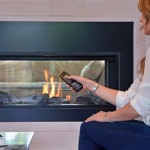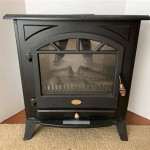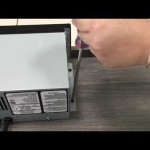Why Is There A Vent In My Fireplace Chimney?
Fireplace chimneys are complex structures designed to safely exhaust combustion byproducts from a fireplace to the outside atmosphere. A key component of many chimney systems is a vent or opening, often seemingly out of place. Understanding the purpose of this vent is crucial for ensuring proper chimney operation, maintaining energy efficiency, and preventing potential hazards. The presence and type of vent can vary depending on the type of fireplace, the chimney's construction, and the intended function. This article will explore the reasons behind these vents, their different forms, and their significance in overall chimney performance.
Chimney vents address a variety of issues related to the safe and efficient operation of a fireplace. These issues include mitigating moisture buildup, facilitating proper draft, and ensuring adequate combustion air supply. While a vent might appear to compromise the chimney's integrity, it is often a carefully engineered feature designed to enhance its functionality. Ignoring or improperly sealing a chimney vent can lead to a host of problems, ranging from inefficient heating to structural damage. Therefore, proper identification and understanding of a chimney vent's purpose are essential for any homeowner with a fireplace.
Facilitating Proper Draft and Reducing Backdrafting
One primary function of a chimney vent, particularly those found in older chimneys, is to improve draft and reduce the likelihood of backdrafting. Draft refers to the natural flow of air upward through the chimney, which is essential for drawing smoke and combustion gases away from the fireplace and out of the home. This draft is created by the difference in air pressure between the warmer air inside the chimney and the cooler air outside. Factors such as chimney height, temperature differentials, and external wind conditions can affect the strength of the draft. A vent can help regulate this airflow, particularly in situations where the draft might be weak or inconsistent.
Backdrafting occurs when the draft reverses, causing smoke and combustion gases to enter the home instead of being expelled through the chimney. This can be caused by a number of factors, including a poorly designed chimney, negative air pressure within the house, or obstructions in the chimney flue. Chimney vents, especially those located near the base of the chimney, can provide an alternative pathway for air to enter the chimney, thereby helping to equalize pressure and prevent backdrafting. Some older chimneys were specifically designed with small access doors or vents at the base to be opened when starting a fire to assist in establishing a proper draft.
These vents are often found in conjunction with a damper located within the chimney flue. The damper regulates the airflow through the chimney, controlling the rate at which air is drawn into the fireplace. By carefully managing the damper setting and utilizing the chimney vent, homeowners can optimize draft and minimize the risk of backdrafting. However, it's crucial to understand the specific design and function of the vent in relation to the damper, as improper operation can lead to reduced heating efficiency or even safety hazards.
Mitigating Moisture Buildup and Preventing Structural Damage
Another critical function of chimney vents is to prevent moisture buildup within the chimney structure. Chimneys are exposed to a variety of weather conditions, including rain, snow, and humidity. Moreover, the combustion process itself produces water vapor as a byproduct. If this moisture is not adequately ventilated, it can condense inside the chimney, leading to a range of problems. These problems include deterioration of the chimney liner, spalling of the brick or masonry, and the growth of mold and mildew.
Condensation within the chimney can also combine with soot and other combustion byproducts to form creosote, a highly flammable substance that can accumulate on the inner walls of the chimney flue. Creosote buildup poses a significant fire hazard, as it can ignite and cause a chimney fire. Chimney vents, particularly those located near the top of the chimney, can help to ventilate moisture and prevent the formation of creosote. By allowing air to circulate within the chimney, these vents promote evaporation and reduce the risk of condensation-related damage.
Furthermore, in colder climates, moisture that has penetrated the chimney materials can freeze and expand, causing cracking and structural damage over time. This freeze-thaw cycle can weaken the chimney's structural integrity and eventually lead to costly repairs. A well-placed vent can help prevent moisture from becoming trapped within the chimney structure, minimizing the risk of freeze-thaw damage. In some cases, specialized chimney caps with built-in vents are used to provide both protection from the elements and enhanced ventilation.
Providing Combustion Air Supply for Modern Fireplaces
In contemporary fireplace designs, chimney vents can serve a different, but equally important, purpose: supplying combustion air to the fireplace. Modern airtight homes are often so well-insulated that they can create negative air pressure inside, making it difficult for a fireplace to draw sufficient air for combustion. This can lead to inefficient burning, smoky fires, and increased levels of indoor air pollution. To address this issue, some fireplaces are designed with dedicated external air intakes that connect directly to the chimney through a vent.
These air intake vents allow the fireplace to draw air from outside the home, ensuring a constant supply of oxygen for combustion. This not only improves the efficiency of the fireplace but also reduces the risk of drawing air from other areas of the house, which can lead to drafts and increased heating costs. Combustion air vents are typically located near the base of the fireplace and are designed to be adjustable, allowing homeowners to control the amount of air entering the fireplace. Properly adjusting the air intake vent can optimize combustion and reduce emissions.
Furthermore, some modern fireplaces utilize sealed combustion systems, where the combustion chamber is completely isolated from the interior of the home. These systems rely entirely on external air intakes connected to the chimney for their air supply. Sealed combustion fireplaces are particularly well-suited for energy-efficient homes, as they minimize the risk of air leakage and heat loss. The vents in these systems are crucial for ensuring proper combustion and maintaining a safe and healthy indoor environment. These are normally smaller vents that use pipes directly to the fireplace appliance to supply air.
In summary, the presence of a vent in a fireplace chimney can serve several critical functions, including facilitating proper draft, mitigating moisture buildup, and providing combustion air supply for modern fireplaces. The specific type and location of the vent will vary depending on the age and design of the chimney and fireplace. Understanding the purpose of the vent is essential for ensuring safe and efficient fireplace operation and preventing potential structural damage. Homeowners should consult with a qualified chimney professional to inspect their chimney and determine the best approach for maintaining its performance and safety.

Fireplace Vent Types Explained Magic Touch Mechanical
Gas Fireplace Venting Explained Heat Glo

What Are The Best Ways To Vent A Gas Fireplace Zoroast

What Are The Best Ways To Vent A Gas Fireplace Zoroast

Fireplaces And Wood Stoves Have Proper Ventilation Building America Solution Center

What Is A Chimney Flue The Mad Hatter

What Is Chimney Venting Why Do We Need It Vertical Care

Fireplace Cover To Keep Cold Air Out

How Chimney Fans Work The Blog At Fireplacemall

7 Chimney Parts Explained Fresh Air Duct Cleaning
Related Posts








